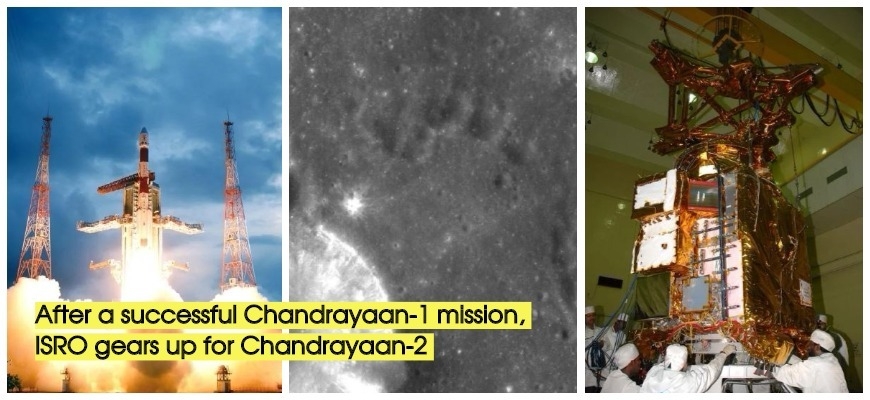Sriharikota, February 17: Setting its own records and achieving milestones, India's space research organisation ISRO is set to launch Chandrayaan-2 mission around April this year. The Union Minister for Atomic Energy and Space, Dr Jitendra Singh said that Indian Space Research Organisation (ISRO) is planning to launch Chandrayan-2 Mission around April this year. Chandrayaan-2 is the country's second mission to the moon.
The Minister was addressing a press conference on the achievements of Department of Space and Department of Atomic Energy, here today. Chandraayan-2 is a challenging mission as for the first time we will carry an orbiter, a lander and a rover to the moon. He said that it is a matter of pride that ISRO is launching Chandrayaan-2, which will place India at a new height in space technology.
Speaking on achievements of Department of Space, the Minister said that ISRO has achieved many milestones in the recent years which include the launch of 104 satellites in a single mission in February last year and the launch of South Asia Satellite which will boost ties with neighbours. He said that India is a frontline nation in the field of space technology and the scientists need to be complimented for it. The space technology is being utilised by various ministries and departments e.g. in Smart City Mission, preparation of utilisation certificates in Ministry of DoNER etc.
The total cost of the Chandrayaan 2 mission will be about Rs 800 crore. He added if the mission’s launch could not take place in April due to unsuitable weather, the window for launch is open till October this year.
ISRO has successfully accomplished 48 missions, including 21 Launch Vehicle missions, 24 Satellite missions and 3 Technology Demonstrators. ISRO Chairman also said that South Asia Satellite is a Common Network for Disaster Management Support, Meteorological Data sharing, connectivity of academic, scientific and research institutions.
GSLV-F10/Chandrayaan-2 Mission
Chandrayaan-2, India's second mission to the Moon is a totally indigenous mission comprising of an Orbiter, Lander and Rover. After reaching the 100 km lunar orbit, the Lander housing the Rover will separate from the Orbiter.
After a controlled descent, the Lander will soft land on the lunar surface at a specified site and deploy a Rover. The mission will carry a six-wheeled Rover which will move around the landing site in the semi-autonomous mode as decided by the ground commands. The instruments on the rover will observe the lunar surface and send back data, which will be useful for analysis of the lunar soil. The Chandrayaan-2 weighing around 3290 kg and would orbit around the moon and perform the objectives of remote sensing the moon.
The payloads will collect scientific information on lunar topography, mineralogy, elemental abundance, lunar exosphere and signatures of hydroxyl and water-ice. GSLV-F10/Chandrayaan-2 Mission is planned during the first half of 2018.

Regarding Department of Atomic Energy, Dr Jitendra Singh said that India is using the technology for peaceful purposes and its applications have been diversified in various fields including electricity generation, agriculture and health sectors. He said that very soon it will be the source of meeting energy needs of the country in a cost-effective manner. He also said that Bhabha Kavach, a lightweight bullet-proof jacket has been developed for security forces. He said that Dr B. Borooah Cancer Institute in Guwahati is now an affiliate of the Tata Memorial Centre for Cancer, Mumbai. A tripartite MoU to this effect was signed on behalf of the North-Eastern Council (NEC), Department of Atomic Energy and Government of Assam.
